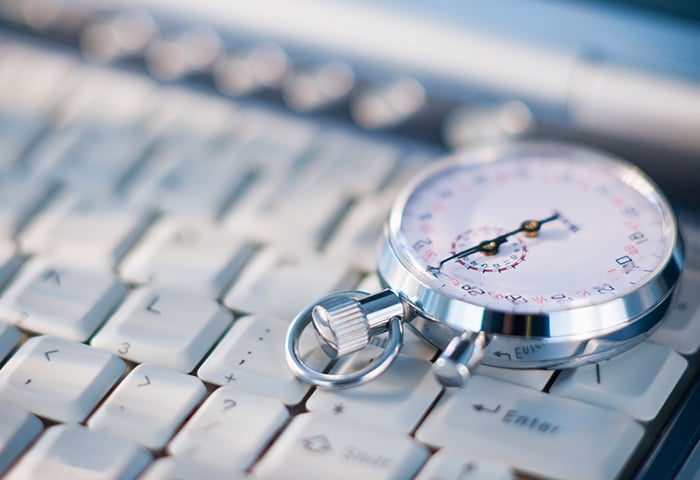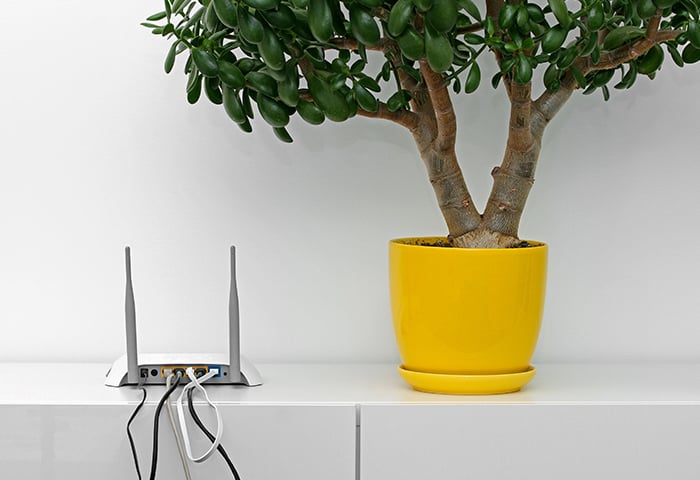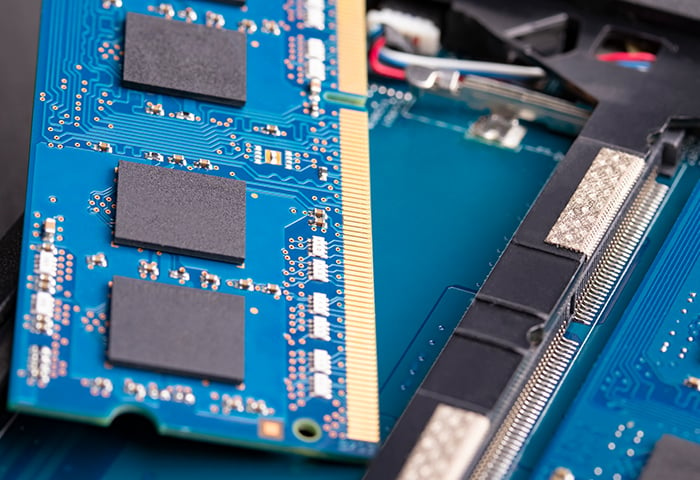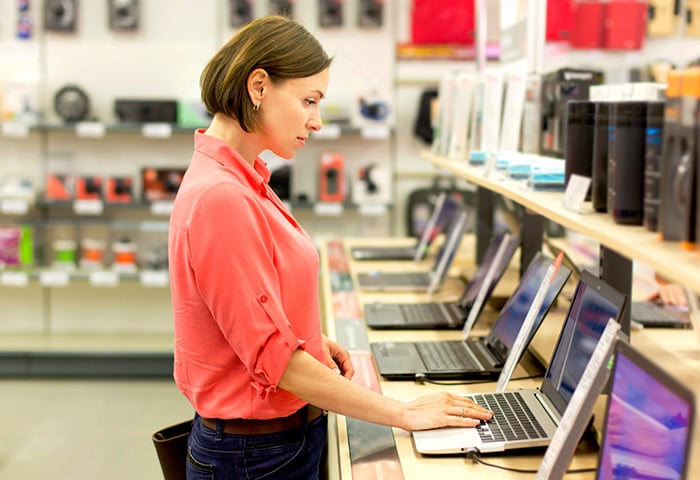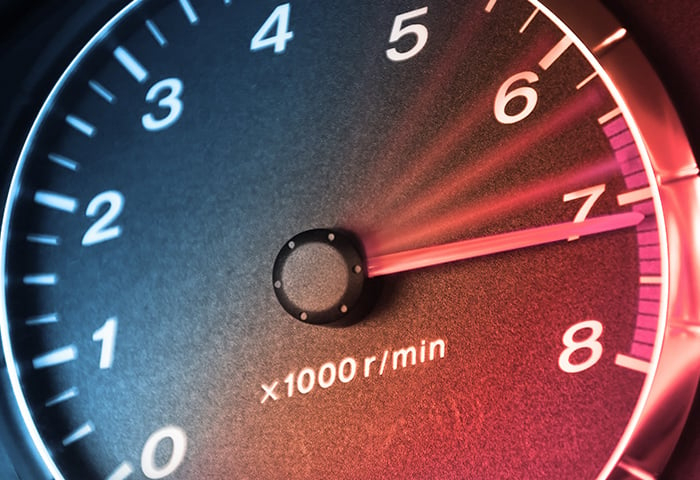Why is my iPhone so slow?
Like any other electronic device, iPhones tend to slow down over time. Particularly common reasons for a slow iPhone include that it’s running out of storage space, the battery is dying, or you’re using old apps and outdated software. But a relatively new iPhone that’s running slow might indicate another issue, like a software or hardware performance problem.
Before taking steps to speed up your iPhone, it’s important to try and figure out exactly what’s slowing it down in the first place. Here are some potential causes of your iPhone’s slow-down:
Storage is getting full
Bloatware (unwanted apps), junk files, and temporary data can quickly fill your iPhone’s limited internal storage and start to affect device performance. To check your available space, go to Settings > General > iPhone Storage. There, you’ll see your total capacity and how much storage is in use.
How much storage your iPhone has depends on its model and variant. Newer models like the iPhone 16 start at 128 GB (and go up to 1 TB on some versions), while older devices such as the iPhone 6 may only offer 32 GB, meaning they fill up much faster.
As a general rule, try to keep at least 10% of your storage free so your iPhone has enough space for essential temporary files that contribute to smooth performance.
Out of date iOS
Without the latest version of iOS, your iPhone may miss out on performance improvements that keep it running efficiently. iOS updates often include memory management enhancements, faster app loading processes, and streamlined security protocols.
Running an outdated version of iOS can also leave you with unpatched security vulnerabilities, making your device more susceptible to zero-day attacks, malware, and other threats that can slow performance and compromise your privacy.
Signal is weak
A weak network or Wi-Fi connection can make your iPhone feel sluggish online. Websites, videos, and apps may load slowly or freeze as your device repeatedly tries to reconnect or fetch data. These issues can stem from a faulty Wi-Fi router or misconfigured network settings on your iPhone. Resetting or reconfiguring your connection often helps restore normal performance.
In some cases, your internet service provider (ISP) may throttle high-bandwidth activities like streaming or gaming to reduce congestion or enforce data limits. Using a VPN — such as AVG Secure VPN for iOS — encrypts your traffic and hides which apps and websites you’re using from your ISP. While it won’t conceal your total data usage, it prevents your provider from targeting or throttling specific services.
Physical damage
Everyone drops their phone from time to time and, while external damage like a cracked screen is easy to spot, internal damage isn’t always so obvious. If your iPhone’s performance has declined after a drop or exposure to water, it’s best to have it inspected and repaired by an Apple specialist.
To help prevent physical damage that affects your phone’s performance, use a durable, waterproof case and a quality screen protector. And remember: newer iPhones are water-resistant, not waterproof, so prolonged or deep submersion can still cause serious damage.
Extreme weather
Extreme weather can negatively impact your iPhone’s performance. High temperatures can cause overheating, leading to slowdowns and potential long-term damage to internal components. Cold conditions, on the other hand, can make your battery drain faster, while using your phone in the rain increases the risk of water damage.
Severe weather — such as storms, heavy rain, or fog — can also interfere with network signals, slowing down internet connectivity.
Settings are not optimized
Some settings can use a lot of power if they’re enabled or turned up to max, which can impact how fast your iPhone runs. Dialing these settings down, or disabling some features altogether, can help resolve the issue.
Here are some settings that you can tweak to improve your device speed:
-
Low Power Mode: This slows down your iPhone to help save battery life, so turning it off can make your device faster.
-
Location services: Disabling this for apps you rarely use can help speed up your iPhone by cutting down on background GPS and network lookups.
-
Background app refresh: This lets apps update content while you’re not using them, so removing this permission can reduce background activity and free up network resources.
-
Screen brightness: High screen brightness draws lots of power, draining your battery faster and potentially affecting performance.
-
Animations: Transition animations or animated wallpapers both require resources, and disabling them can help speed up your phone.
Battery deterioration
Over time, your iPhone battery naturally depletes, leading to shorter battery life and weaker performance. When new, your iPhone’s battery capacity is close to 100%. As it ages, that capacity declines, and once it drops to 80% or below, a replacement is often needed — typically after two to three years of use.
According to Apple, iPhone 14 and earlier models reach around 80% capacity after 500 charge cycles under ideal conditions, while iPhone 15 and newer models can last up to 1,000 charge cycles. A charge cycle refers to discharging the equivalent of one full battery charge.
Performance throttling
Apple has previously come under fire for its so-called “performance management” practices — with a claimant in the UK’s Court of Appeals claiming the manufacturer intentionally slows down older iPhones, such as the iPhone 6, 7, 8, and X, to preserve battery life and maintain stability.
While this specific case is ongoing, Apple has previously confirmed that a software update intentionally slowed down some older models to offset problems with aging batteries. So, if you own an older iPhone and notice consistent slowdowns, it may be due to Apple’s built-in performance management.
16 ways to speed up a slow iPhone
Top tips you can use to try to speed up your iPhone include optimizing your display settings, clearing old data and junk files, and updating your software. You can also try changing your internet and location settings or, if all else fails, replacing your battery or doing a factory reset.
Here are some of the best things to try to make your iPhone run faster:
Restart your device
Simply turning your iPhone off and turning it back on again may help clear any background issues that are causing a slowdown. This should be your first step when trying to troubleshoot a slow iPhone.
Here’s how to restart your iPhone:
-
Press and hold the side button on the right side of your phone.
-
Gently swipe right on slide to power off.
-
Power your iPhone back on by holding the side button.
Check for iOS updates
Installing the latest iOS update can help speed up a sluggish iPhone. Developers optimize their apps for the newest iOS versions, so running outdated software can cause apps to lag or behave unpredictably. Updating your device not only improves performance but also enhances your built-in security and stability.
Here’s how to check for iOS software updates:
-
Open Settings > General > Software Update. Wait while iOS checks for updates.
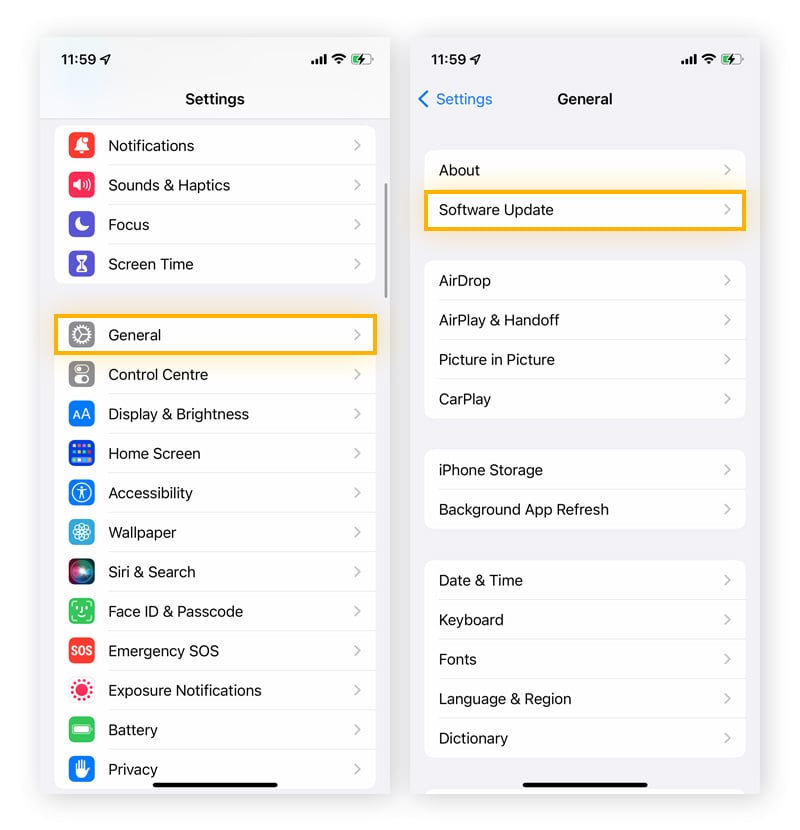
-
Tap Download and Install. Follow the password prompts to complete the installation.
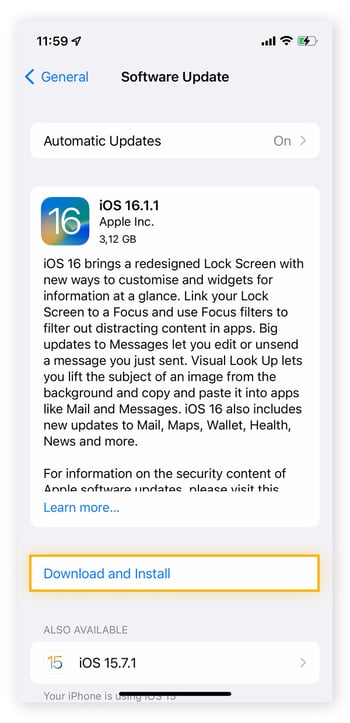
Check for app updates
Installing the latest security patches for all your apps will help keep your iPhone secure and fast. To enable automatic app updates on your iPhone, go to Settings > Apps > App Store and toggle App Updates on.
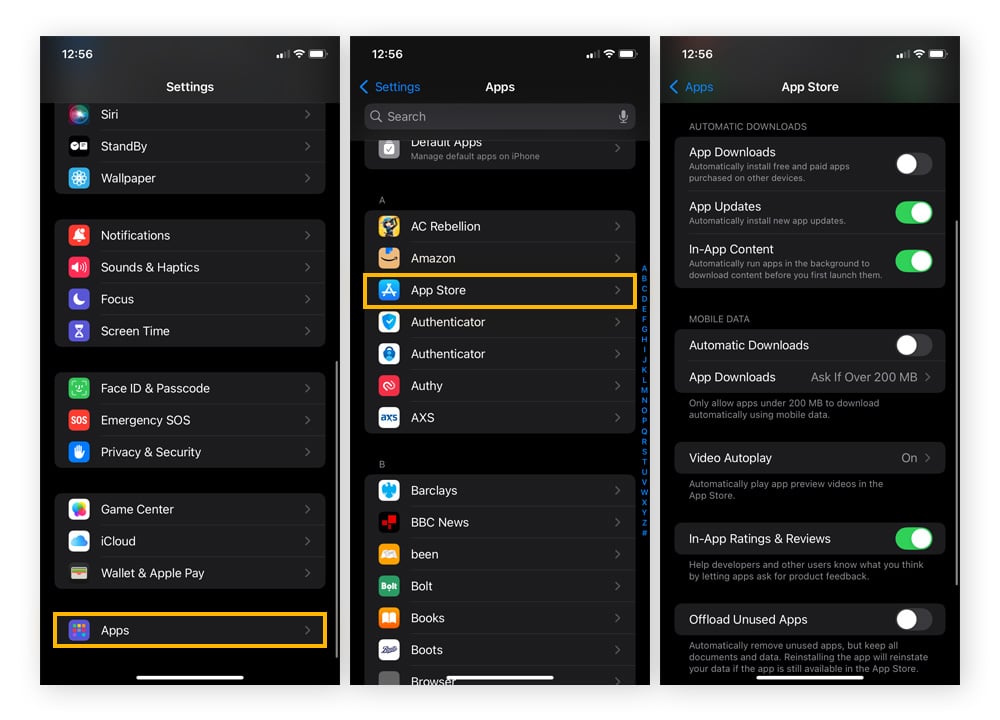
You can also update individual apps manually. Simply go to the App Store, and tap your profile icon in the top-right corner. Then, scroll to Pending Updates and tap Update next to any app you want to update.
Avoid extreme temperatures
Like any other smartphone, iPhones generally perform best in ambient temperatures between 32° and 95° F (0° and 35° C). Don’t let your iPhone get too hot or cold — whether by leaving it lying around in direct sunlight at the beach or in sub-zero temperatures on a skiing trip.
If you do need to use your device in extreme temperatures, follow these tips:
When it’s hot
-
Keep your iPhone in a bag to avoid your body heat adding to the problem.
-
Take off the case, especially when charging your device, as this can trap heat.
-
Try to only use your phone indoors or in shaded areas.
When it’s cold
Turn off location services
Many apps need location services to function. Apple Maps or Google Maps can't take you home if the app can't locate you. Ride-sharing apps can't track a ride in real time without GPS coordinates. But these location services don’t need to run 24/7.
Check which apps use location services and remove location access for apps that don’t need it, or set them to use your location only while the app is in use.
Here’s how to turn off or edit location services:
-
Go to Settings > Privacy & Security > Location Services.
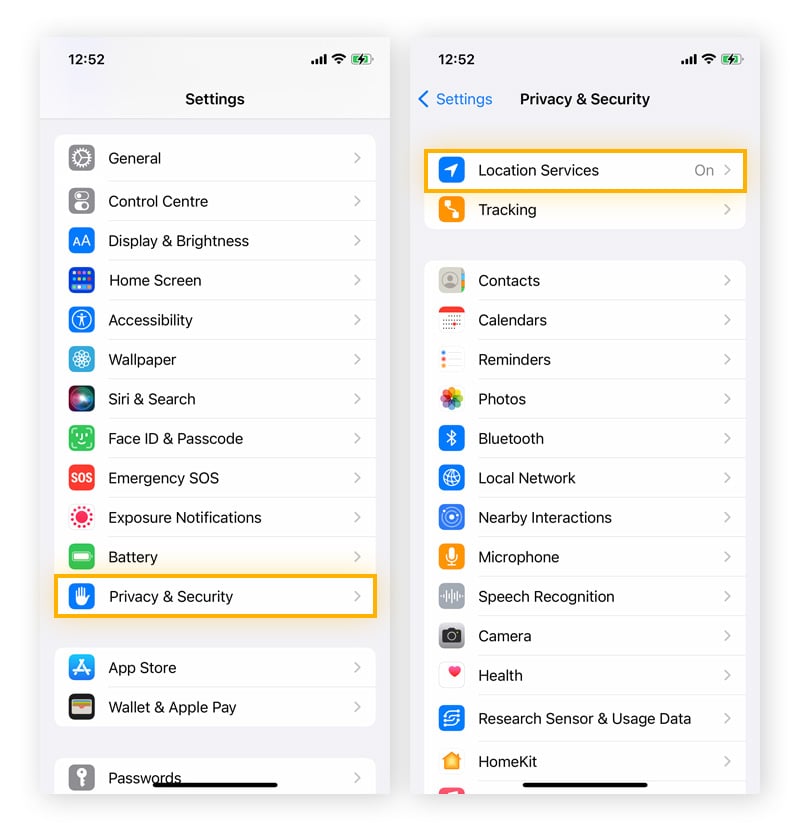
-
Toggle Location Services off to remove permissions from all apps. Alternatively, tap the app you want to edit and select Never, Ask Next Time Or When I Share, or While Using the App.
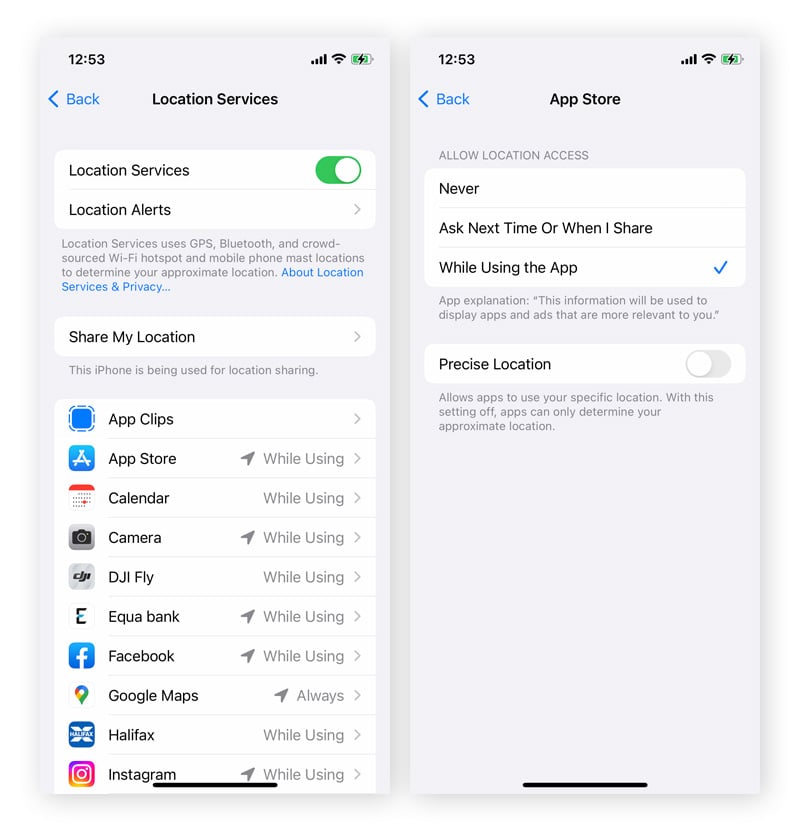
Scan your iPhone for malware
Although rare, iPhones can get infected with viruses and other malware, which can slow down your device’s performance. Jailbroken iPhones are at an even higher risk of malware infection because they do not have Apple’s built-in security protections.
Download and install a cybersecurity tool to protect your device. AVG Mobile Security for iPhone & iPad is lightweight and custom-built for iOS to block threats. The award-winning app will scan your network connections to make sure they’re secure, helping prevent unwanted traffic and blocking malware from infecting your device.
Disable Low Power Mode
Low Power Mode helps extend your iPhone’s battery life, but it can also slow you down by limiting background activity and throttling performance. Once your phone is charged, turn off Low Power Mode to restore full speed and responsiveness.
To disable low power mode on iPhone, go to Settings > Battery and toggle off Low Power Mode.
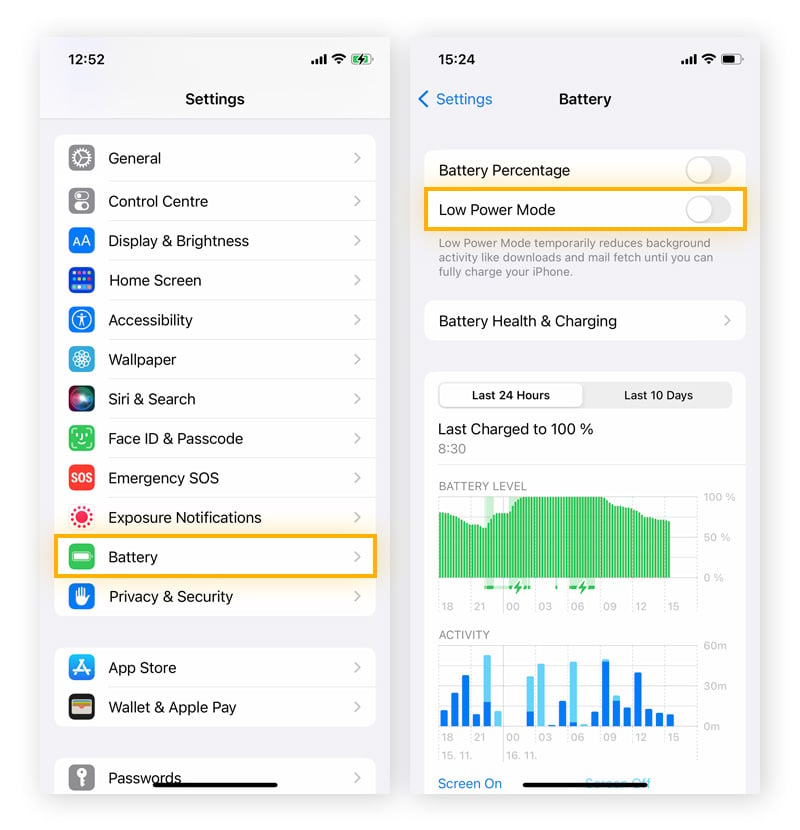
Disable automatic iCloud backup
It’s important to regularly back up your iPhone, but when your device uploads large volumes of data to iCloud automatically, it can slow your phone down at an inopportune moment. Setting iCloud backup to manual means you can choose exactly when this takes place, helping to prevent your processing power from being suddenly throttled.
To disable automatic iCloud backup, go to Settings > iCloud > Backup. Then, toggle off Back Up This iPhone and tap Turn Off when prompted. You can toggle it back on at any time.
Check your internet connection
When people say “my iPhone is running slow” they often mean “the internet on my iPhone is running slow,” which, in most cases, isn’t due to a problem with your device. To improve internet speed, start by checking that your Wi-Fi network or mobile data connection is stable and working properly.
Here are a few ways to diagnose the cause of your iPhone’s slow internet connection:
Get a stable connection
If your Wi-Fi connection is weak, you’ll see an immediate drop in internet speed. Check that your Wi-Fi icon shows full signal strength (three full bars). If it doesn’t, toggle Wi-Fi off and back on, move closer to your router, restart the router, or switch to mobile data for a stronger connection.
Perform an internet speed test
Use a free online speed test to measure your connection’s download and upload speeds. This helps verify whether you’re getting the performance promised by your internet service provider. Popular options, like Ookla and Etrality GmbH, also offer dedicated iOS apps for quick, reliable testing.
 Performing an internet speed test at speedtest.net.
Performing an internet speed test at speedtest.net.
Reset your network settings
Resetting your iPhone’s network settings can give it a fresh start with a faster internet connection. You’ll need to re-enter your Wi-Fi password when you’re done, but it should help speed up your iPhone.
Here’s how to restart your iPhone’s network settings:
-
Go to Settings > General > Transfer or Reset iPhone.
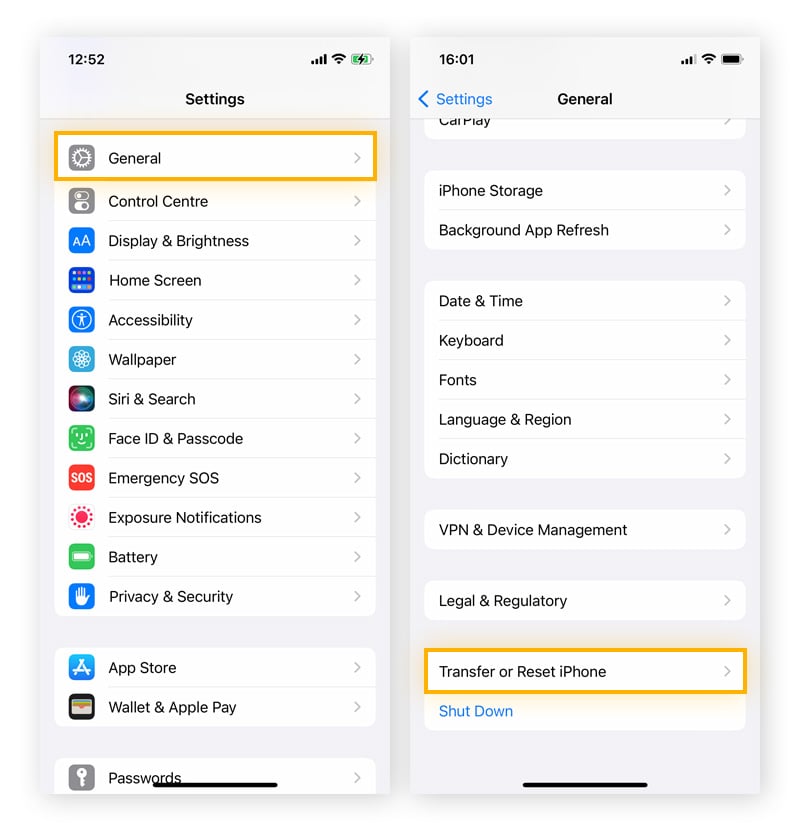
-
Tap Reset Network Settings and enter your PIN when prompted.
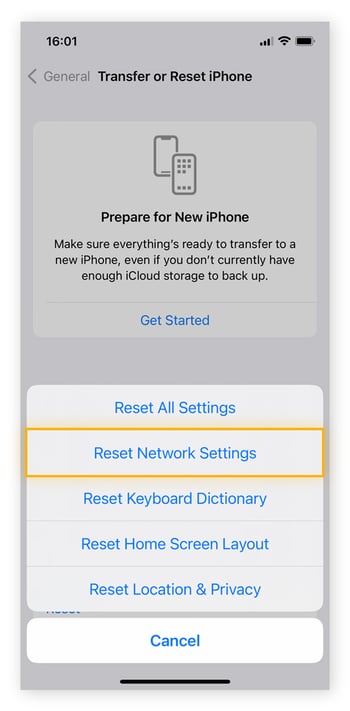
Fix Wi-Fi network issues
If your iPhone feels slow at home but performs well elsewhere, your router or home network is likely the issue. Try improving your Wi-Fi signal by moving your router to a more central location, switching to a less congested Wi-Fi channel, or restarting it.
If your iPhone remains sluggish even on a strong, optimized network, background data activity — such as apps syncing or updating — may be the real cause.
Reduce motion settings and screen brightness
A bright, animated screen can drain your phone’s resources and contribute to slower performance. Lowering your screen brightness and reducing motion effects can help speed up a sluggish iPhone. Keep in mind that adjusting motion settings may affect autoplay videos and certain visual effects in some apps.
Here’s how to reduce motion settings on iPhone:
-
Go to Settings > Accessibility > Motion.
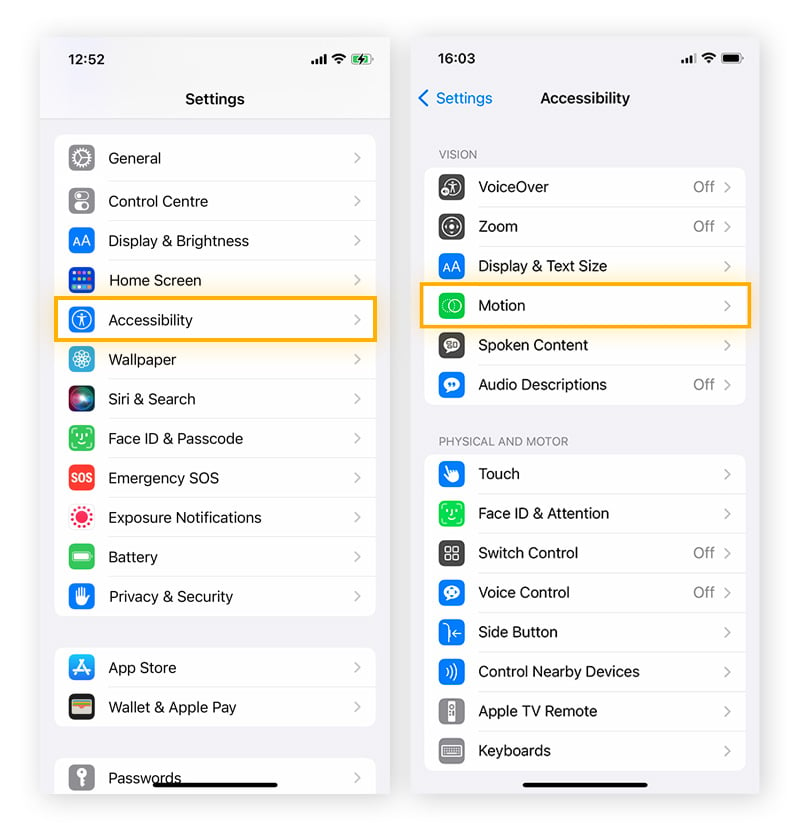
-
Toggle on Reduce Motion and toggle off Auto-Play Message Effects and Auto-Play Video Previews.
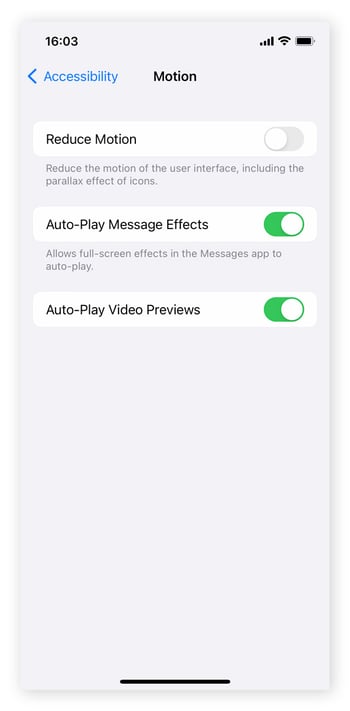
To change screen brightness settings on iPhone, go to Settings > Display & Brightness and move the scroll bar to the left to reduce brightness. You can also turn on Night Shift to automatically reduce brightness when natural light is dimmer and select Dark mode to keep the iOS theme darker.
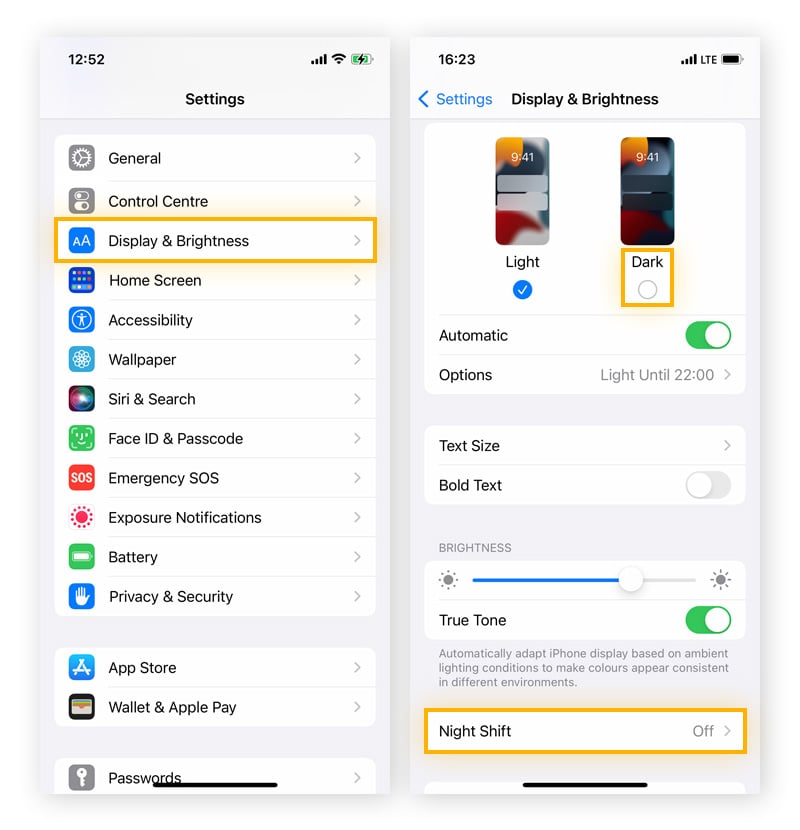
Get rid of widgets you don't need
Widgets on your iPhone’s home screen allow you to see updated app content without having to open the app. They rely on background data (or strong network connectivity) and live updates that can contribute to laggy performance.
To remove widgets you don’t use, tap and hold the widget, select Remove Widget and tap Remove.
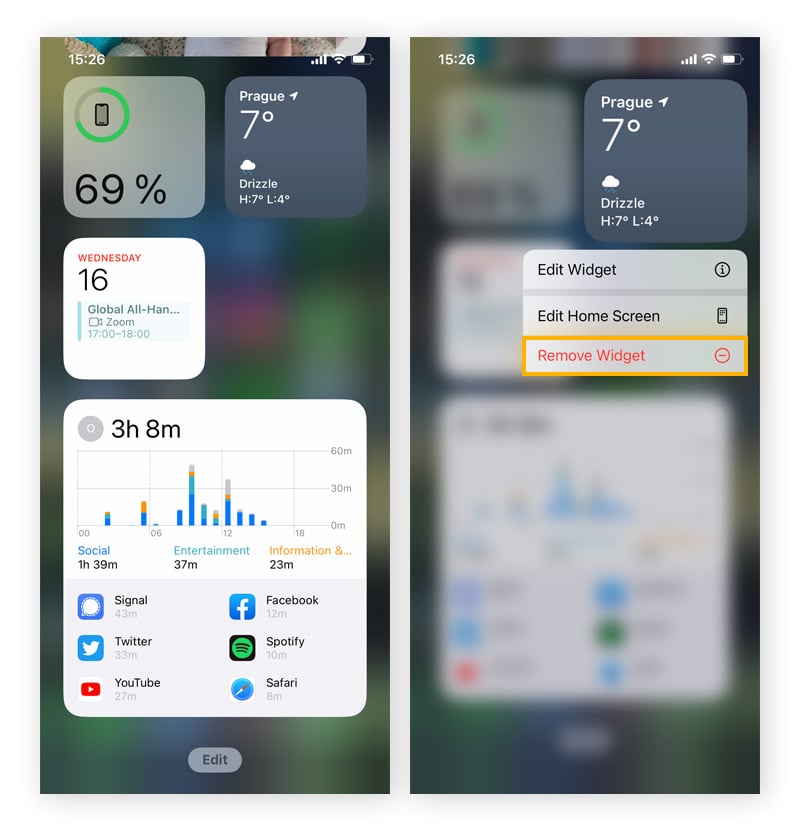
Turn off Background App Refresh
Background App Refresh allows apps to update their content when they’re not actively in use, so your email, news, or social media feeds are current when you open them. However, this feature can slow down your iPhone and drain the battery more quickly.
Since most apps don’t need to refresh until you launch them, disabling Background App Refresh can help conserve both battery life and mobile data.
Here’s how to check your Background App Refresh settings:
-
Go to Settings > General > Background App Refresh.
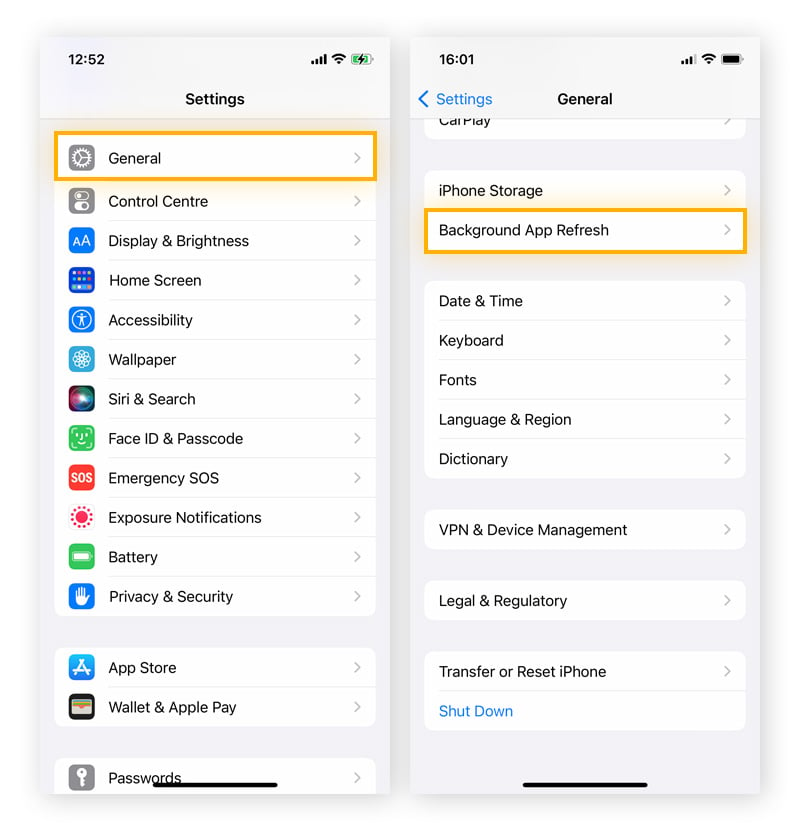
-
Toggle off background app refresh for the relevant app by choosing one of the following options: Off, Wi-Fi only, or Wi-Fi & Mobile Data.
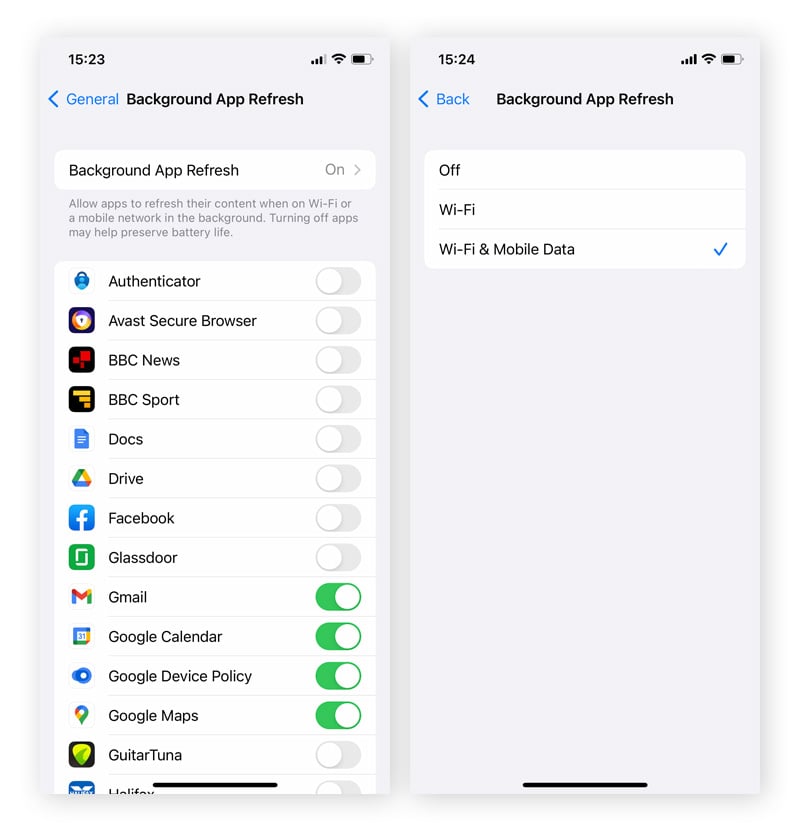
Free up space on your device
If you suspect your iPhone speed issues are because of limited storage space, there are ways you can remove bloatware or junk files to try and fix the issue. Start by getting rid of unwanted images and videos and unused apps.
-
To quickly delete duplicate photos, go to Photos > Utilities > Duplicates > Tap Merge.
-
To automatically delete unused apps, go to Settings > General > iPhone Storage and tap Enable next to Offload Unused Apps.
Clearing space in your memory can make your iPhone considerably faster. But remember, simply hiding apps on an iPhone does not free up storage space.
You can also clear your search and browser history from your iPhone and delete cookies to free up space and preserve your privacy.
Replace your battery
Check your battery health via Settings > Battery > Battery Health & Charging. If your battery function percentage (your battery’s maximum capacity) is lower than 80%, it means the battery has degraded to the point that replacing it will likely improve the overall performance of your iPhone.
Send your battery to an official Apple repair center — attempting to replace the battery yourself can result in permanent damage to your iPhone.
Restore to factory settings
Restoring your iPhone to its factory settings should be your last resort, because it deletes all your saved data and settings. The process is irreversible, so back up any data you wish to keep to your iCloud, Mac, or an external hard drive first.
Here’s how to perform a factory reset on your iPhone:
-
Go to Settings > General > Transfer or Reset iPhone.
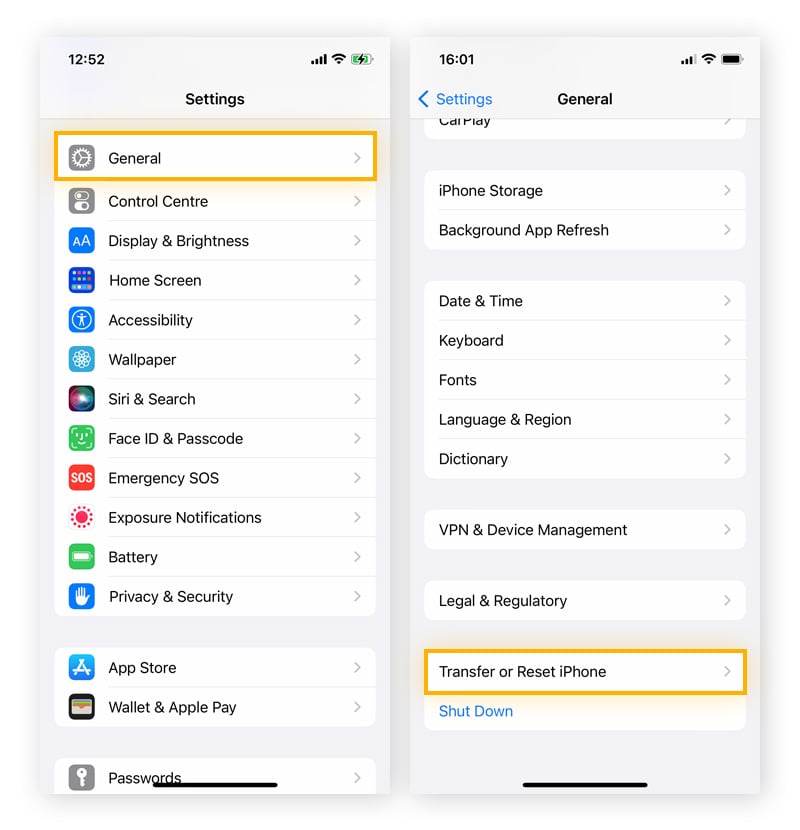
-
Tap Erase All Content and Settings > Continue.
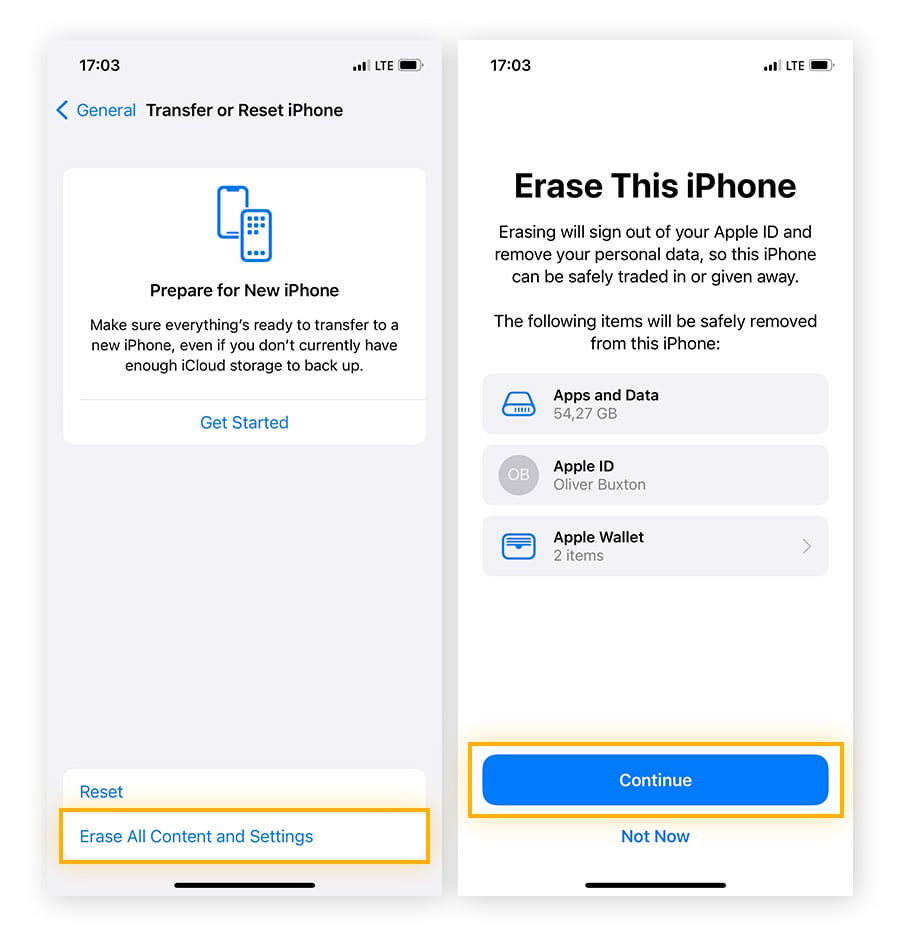
If you have an iCloud backup, you can restore it during the setup process. When you reach the Apps & Data screen, simply tap Restore from iCloud Backup and sign in with your Apple ID.
Help keep your iPhone fast and secure with AVG Mobile Security
Whatever the cause of your slow iPhone — degraded battery, weak connection, background data, or a combination of factors — protecting your device against malware is essential. Not only can threats slow down your iPhone, but they also leave your data vulnerable.
Download AVG Free Mobile Security for award-winning cybersecurity tools that help keep your iPhone safe and running smoothly. Get notified of data breaches, scan Wi-Fi networks for vulnerabilities, and protect your most important photos in a secure vault. Download it for free today.
.png)
.png)
/How-to-speed-up-your-iPhone-Hero.jpg?width=1200&name=How-to-speed-up-your-iPhone-Hero.jpg)

















/How-to-speed-up-your-iPhone-Thumb.jpg)
